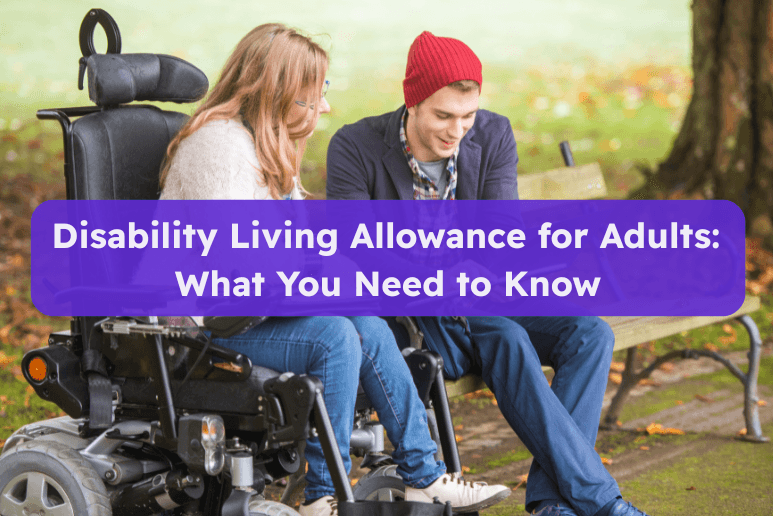All Articles
3 min read
Disability Living Allowance for Adults: What You Need to Know
Written by
Purpl
Published on
August 15, 2025

At Purpl, we know how confusing the benefits system can be, especially when it comes to Disability Living Allowance (DLA) for adults. With changes over the years, it’s easy to be unsure about what DLA is, who still receives it, and what steps you may need to take. This guide clears up the confusion and explains what you need to know.
What Was Disability Living Allowance?
Disability Living Allowance (DLA) was a tax-free benefit designed to help disabled people with the extra costs of everyday life. It was made up of two parts:
- Care Component – for help with personal care, such as washing, dressing, or eating.
- Mobility Component – for help getting around if you have difficulty walking or need supervision outdoors.
DLA was available for children and adults, but for new claims for adults aged 16 or over, it is no longer possible.
Who Can Get DLA Now?
Adults aged 16 or over cannot apply for DLA. Anyone in this age group should instead look at:
- Personal Independence Payment (PIP) – for people aged 16 up to State Pension age.
- Attendance Allowance – for those over State Pension age who need help with personal care.
Both PIP and Attendance Allowance are designed to support people based on how their condition affects daily life and mobility.
What If You Already Receive DLA?
If you’re already on DLA, there’s no need to panic. You can continue receiving it until the Department for Work and Pensions (DWP) asks you to switch to PIP. This process, known as “natural reassessment”, usually happens when there’s a change in your condition or when your DLA award is due for review.
Key points to remember:
- You will continue to receive DLA until a decision is made on PIP.
- If invited to apply for PIP, it’s important to respond promptly to avoid gaps in payments.
- You may need to provide updated medical evidence or complete a PIP form detailing how your condition affects your daily life.
How Is PIP Different from DLA?
PIP replaced DLA for adults and has some key differences:
- Assessment – PIP uses a points-based system to evaluate how your condition affects your day-to-day life and mobility.
- Eligibility – It focuses on your ability to complete everyday tasks and move around, not just your medical condition.
- Payment Rates – PIP has two components: daily living and mobility, each with standard or enhanced rates, depending on your points.
For full details on PIP and the transition from DLA, see the GOV.UK PIP guide.
Steps You Can Take
If you’re still receiving DLA:
- Keep your contact details updated with the DWP to ensure you don’t miss reassessment notices.
- Prepare for PIP – gather medical evidence, notes on how your condition affects you, and any supporting documents.
- Get help if you need it – organisations like Citizens Advice and Scope can guide you through the PIP application process.
Final Thoughts
Understanding DLA and its replacement, PIP, can be confusing, but staying informed helps you plan and protect your income. Even though new adult claims for DLA aren’t possible, anyone still receiving it can continue to benefit until reassessment.
At Purpl, we’re here to help you navigate benefits, understand your rights, and access the support you’re entitled to. If you need personalised guidance or more information, reach out – we’ve got your back.

Sammi is autistic, has ADHD, and lives with POTS. She’s passionate about disability advocacy, accessibility, and creating spaces where people feel seen, heard, and understood. With a sharp sense of humour and a deep love for community, she speaks openly about the realities of being neurodivergent across all of her personal platforms, always aiming to challenge stigma, spark conversations, and remind others they’re not alone.
Other articles you might like:
DWP Confirms Small Benefits Increase for PIP, Carer’s Allowance & More
Going Abroad On PIP: The 4-Week Rule That Could Pause Your Payments
Changes to Universal Credit: What They Mean for Disabled People, and Where to Get Support
How to Challenge a PIP Decision in the UK: What to Do If Your Claim Is Refused or Underpaid
PIP Reform 101: Latest Update on Personal Independence Payment (PIP) Changes
